I was—and in many ways still am—a massive fan of Robin of Sherwood. When it first aired in the 1980s, it brought something new to the Robin Hood legend: grit, mysticism, moral complexity. It felt spiritual, but not in a churchy way. It gave the myth a haunting depth. I was captivated. I even named my website, Wolfshead Online, after the outlaw status bestowed on Robin in the show’s very first episode.
But as my Catholic faith deepened, and as I studied the history of medieval England more seriously, I began to see something disturbing under the hooded cloak of the show’s storytelling. Richard Carpenter, for all his brilliance as a writer, didn’t just reinterpret the Robin Hood myth—he rewired its spiritual core. The Church is sidelined or villainized. Paganism is exalted. Herne the Hunter, a woodland spirit of ambiguous origin, becomes the true moral compass.
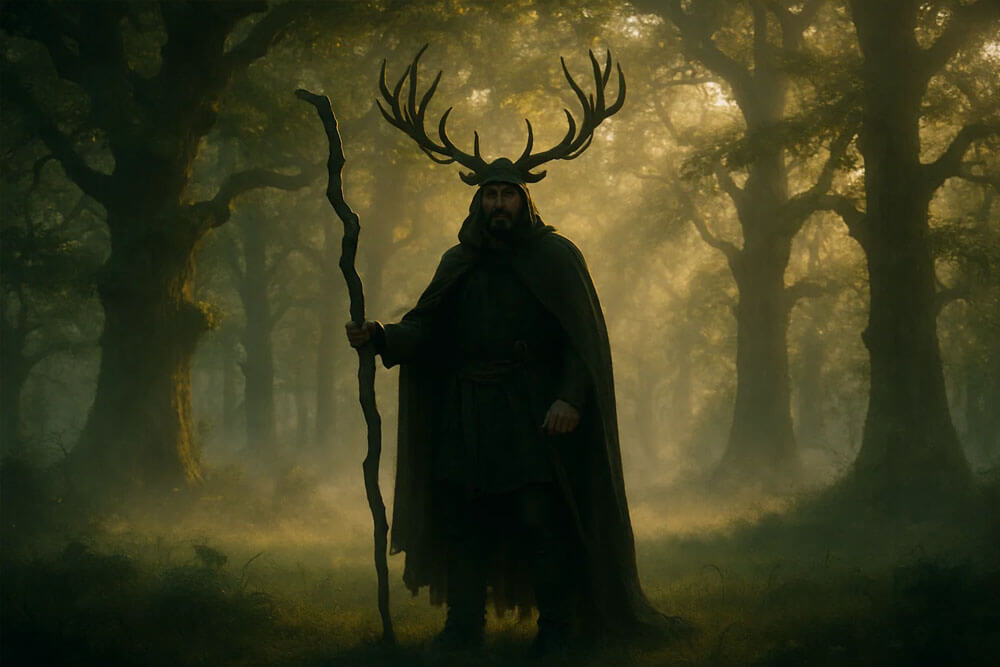
This isn’t just creative license. It’s a quiet form of religious subversion. And it reflects a broader cultural myth that has taken root: that Christianity, especially Roman Catholicism, was a foreign imposition on the native soul of England—and that paganism was what the people truly loved.
Myth, Magic, and the Missing Church
In Robin of Sherwood, the Church is not just absent—it is depicted as hollow, corrupt, or even spiritually dead. Abbot Hugo is greedy and cruel. The Knights Templar are portrayed as thugs or hypocrites. Even Friar Tuck, who should represent the Church’s pastoral care for the poor, is more of an apostate than a priest. He openly communes with Herne the Hunter, blending Christian and pagan belief in ways that would have been considered heretical—and punishable—in the 12th century.
In Robin of Sherwood, Tuck is portrayed as a gluttonous, lazy jokester, more John Belushi than St. Francis — think Animal House in Sherwood Forest. The Merry Men come off like the outlaws of Delta House: rowdy, rebellious, but charming.
Tuck blends right in, the slacker in a monk’s robe. He never baptizes a child, hears a confession, or celebrates the Eucharist. He offers no spiritual leadership, no doctrine, no grace. Instead, he grumbles about the Church, sneers at the Crusaders, and raises a mug like one of the boys. He’s not a shepherd of souls — he’s comic relief. And yet, in the context of the show, he’s the only face of Christianity the viewer ever really sees. A friar in name, but not in mission. A priest without Christ. It’s not just a distortion. It’s a spiritual sleight of hand.
Meanwhile, Herne the Hunter is treated as a noble, benevolent force. He lives in the forest. He guides Robin. He speaks cryptic wisdom. In this version of the legend, Herne becomes a stand-in for God—or at least, a more authentic and earthy alternative. This is no accident. It is a deliberate inversion of religious authority: the Roman Catholic Church is an oppressor; the forest god is the true redeemer.
The Forgotten Devotion: Robin and the Blessed Virgin
One of the most striking omissions in Robin of Sherwood is Robin Hood’s traditional devotion to the Blessed Virgin Mary. In the earliest surviving ballads, including A Gest of Robyn Hode, Robin is portrayed as praying daily to Our Lady and even attending Mass in her honor three times a day. He explicitly attributes his fortune to her intercession and considers her image the highest collateral in England. In Robin Hood and the Monk, Robin is shown stopping to pray at St. Mary’s Church in Nottingham.
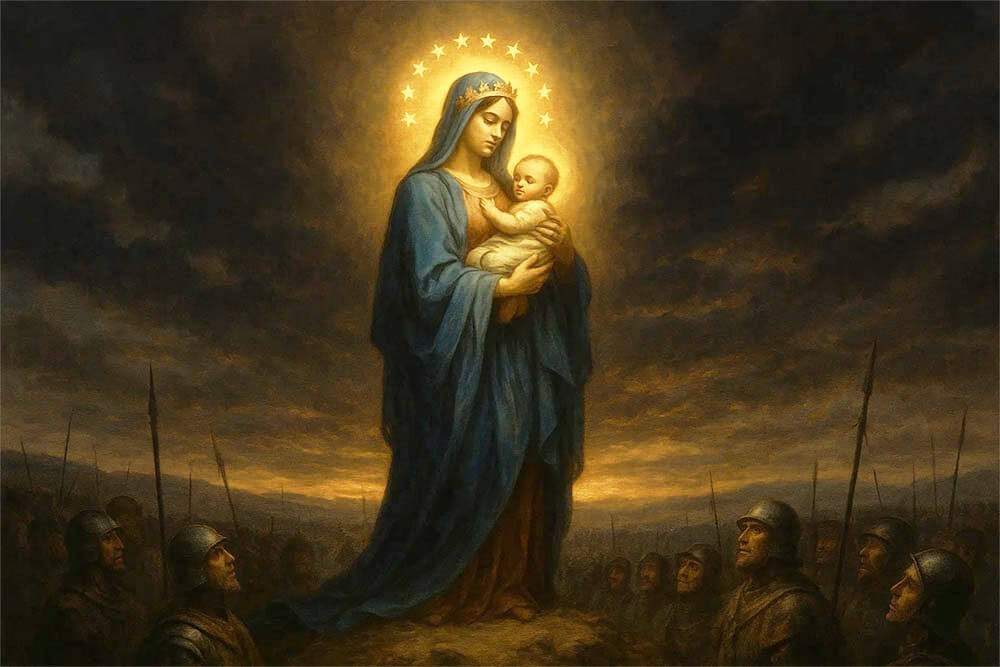
This Marian devotion is not a decorative detail—it is central to the medieval character of Robin Hood. He is a sinner, yes, but one who places himself under the protection of the Mother of God. That this element is entirely erased in Robin of Sherwood speaks volumes. Carpenter didn’t just shift focus away from the Church—he erased the single most consistent religious motif in the original legend. Herne may whisper in the trees, but in the true legend, Robin spoke first to Mary.
The False Memory of the “Old Ways”
What Robin of Sherwood did, perhaps without fully realizing it, was plant a seed that has now grown into an entire cultural movement. From Wicca to TikTok witches, from neo-Druids to Norse identitarians, the myth of the “old ways” has returned—not as history, but as spiritual fashion.
In this myth, Christianity is the villain: an alien faith that trampled local gods, burned sacred groves, and imposed Latin and Rome upon free-spirited peoples. The truth, of course, is more complicated. But truth rarely stands a chance against aesthetics. And Carpenter’s forest is aesthetically irresistible: misty, ancient, morally ambiguous. It whispers of a lost time when men followed nature, not dogma.
But that time never truly existed.
Historical Reality: The Church as Civilizational Anchor
The world before Christ was not enlightened. It was tribal, cruel, sacrificial, and hierarchical without mercy. Infanticide was common. Slavery was the norm. Human sacrifice occurred in Celtic, Germanic, and even Roman cultures. Women had no rights. Sexual predation was routine.
It was Christianity—not paganism—that introduced a radical idea: that every human being, rich or poor, male or female, was made in the image of God. It was the Catholic Church that built monasteries to feed the hungry, care for the sick, and teach the illiterate. It was the Church that restrained kings with moral law, and that gave Europe not only faith, but order, art, and peace.
To erase this and replace it with forest mysticism is not just ahistorical. It is a betrayal of the very civilization that allowed Carpenter the freedom to write his scripts.
The Holy Spirit Hinders the Forest Gods
One of the most powerful theological insights I’ve ever read came from an anonymous Jesuit. He argued that when Christ ascended, He did not leave the world orphaned. He sent the Holy Spirit—and with Him came not violence or conquest, but grace. The Spirit didn’t silence paganism. He simply outshone it.
Paganism withered because it couldn’t compete. It offered no Gospel, no liturgy, no saints. No sacraments, no salvation. It had beauty, perhaps—but no love. So it died.
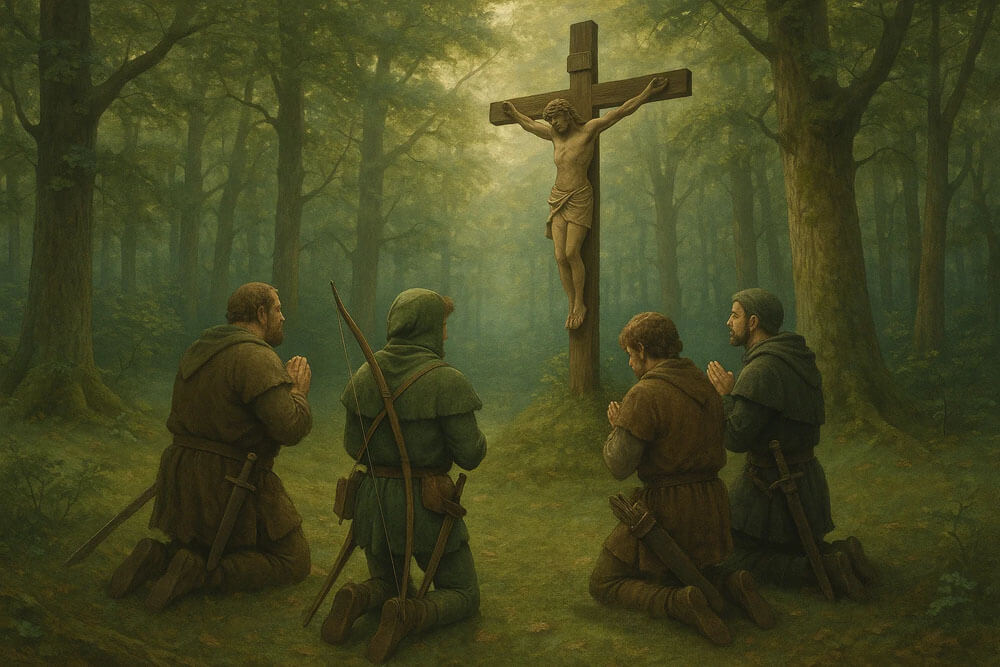
Today, as Christianity is pushed to the margins in the West, we are not witnessing a spiritual renaissance. We are witnessing a pagan relapse—and not even a noble one. In the vacuum left by Christendom’s retreat, we find a rising death cult: abortion, homosexuality, transgender mutilation, euthanasia, sexual confusion, and spiritual despair. These are not signs of returning vitality. They are symptoms of rot.
As one traditional Jesuit devotional put it:
“What was the state of society before the coming of the Holy Ghost? Idolatry and superstition, tyranny and oppression, reigned everywhere; the most revolting vices were even worshipped! The breath of the Holy Spirit swept away these abominations, and substituted for them the reign of truth, justice, and virtue.”
This isn’t sentimental piety. It’s history. Before Pentecost, there were no hospitals, no shelters, no organized compassion. Pagan cultures built temples to lust, but they did not build hospices.
Christianity, animated by the Holy Spirit, renewed the moral architecture of the West. The “old ways” romanticized by neopagans and pop-culture nostalgists like Richard Carpenter were not rustic idylls of tree worship and seasonal harmony. They were brutal, arbitrary, and cruel. A world before Christ was a world without mercy. A world without the maternal affection of the Virgin Mary. A world without hope.
That is the uncomfortable truth behind the seductive fog of the Green Man and the Horned God.
The Prophetic Voice They Laughed At
Robin of Sherwood didn’t face much backlash in its time—not because it was uncontroversial, but because British Christianity had already begun retreating from the culture war. The only major public voice to raise alarm was Mary Whitehouse, who denounced the show for blasphemy and moral confusion. She specifically called out the Satanic elements in The Swords of Wayland and Robin’s resurrection in The Greatest Enemy as offensive to Christian belief. She was mocked for it, of course—Carpenter himself dismissed her by quipping, “And you’re a professional… what?”
But history is beginning to vindicate her. She saw what many missed: that RoS didn’t just tell stories—it reshaped spiritual memory. It replaced sacraments with swordplay, Christ with Herne, and the Resurrection with recycled myth. And the silence of other Christian voices wasn’t proof of consent. It was the first signal of surrender.
The Roots of the Pagan Revival
Much of Robin of Sherwood’s mystical tone can be traced to the influence of Margaret Alice Murray, a 20th-century Egyptologist and folklorist whose 1921 book The Witch-Cult in Western Europe and later The God of the Witches popularized the idea that medieval witches were not heretics or devil-worshipers, but remnants of a pre-Christian, matriarchal fertility religion. Though her theories have been discredited by serious historians, Murray’s work became foundational for the Wiccan movement and remains beloved in neopagan circles. It is likely through Murray’s lens that Carpenter viewed figures like Herne the Hunter—whom he elevates from medieval folklore to a forest deity guiding Robin in a mystic struggle of good and evil.
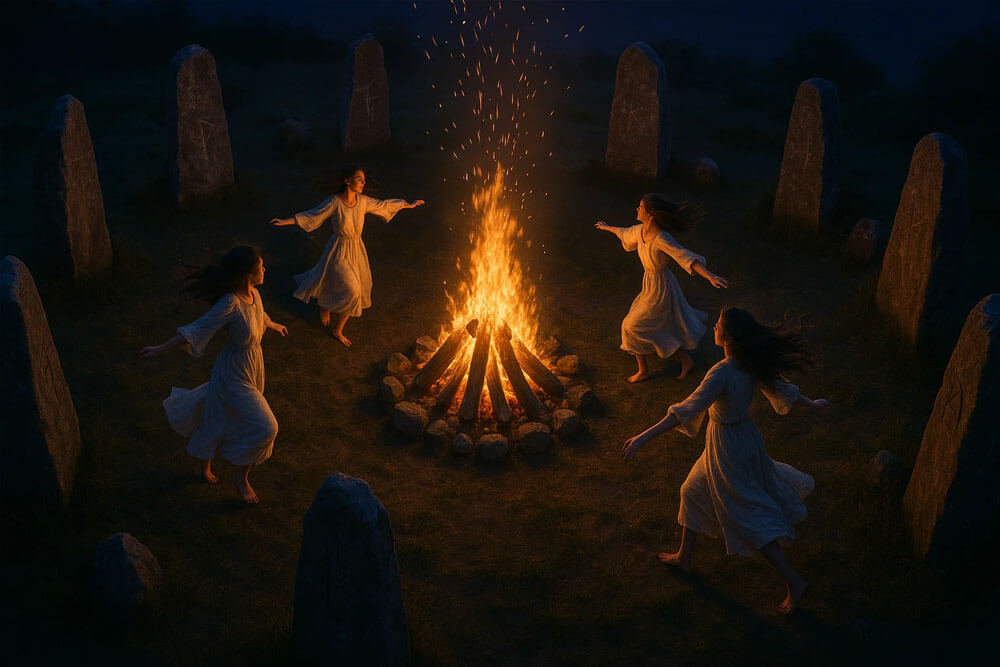
This reimagining dovetails with the 1980s rise of “earth religions,” goddess worship, and a broader cultural infatuation with pre-Christian spirituality. The depiction of Herne as a benevolent horned god, and the series’ sympathetic treatment of mystical outsiders, reflects not historical reality but a romanticized neopagan mythos shaped more by 20th-century counterculture than 12th-century England. Carpenter didn’t just dramatize medieval folklore—he filtered it through a distinctly modern lens, repackaging myth as spiritual allegory. While evocative, this approach inevitably distorts the historical religious worldview, subordinating Christianity to a fantasy of ecological pagan harmony.
The Myth of Nuance
Modern defenders of Robin of Sherwood often describe it as offering a “balanced” or “nuanced” portrayal of religion. Some even claim it reflects the historical coexistence of Christianity and paganism. But this is revisionist comfort-speak. The Church is shown as corrupt, comical, or absent. Paganism is honored, elemental, and alive. That’s not nuance—that’s an inversion. It’s a quiet triumph of spiritual relativism, smuggled in through myth. And while Carpenter’s personal faith may remain undocumented, the faith of his imagination is loud and clear: the Cross is old; the forest is sacred. That is not medieval realism. It is post-Christian propaganda.
Conclusion: Robin Hood Deserved Better
It’s telling that Robin of Sherwood portrays every religious tradition with respect — except Christianity. Judaism is treated with reverence in The Children of Israel episode. Islam is dignified through the character of Nasir, who is noble, disciplined, and never conflicted about faith. But Christianity — the very faith that gave rise to chivalry, conscience, and the sacredness of the poor — is shown as bloated, corrupt, or absent. It’s not diversity — it’s inversion. And it’s part of a wider cultural project: to displace the Church not just from the present, but from the memory of the past.
I still love Robin of Sherwood. But I can no longer watch it uncritically. Carpenter’s series was brilliant, yes. But it also participated in a larger cultural deception: that the Church was the enemy, and that the old gods had something better to offer.
They didn’t. They never did.
Robin Hood was not a Druid. He was not a shaman. He was not the son of Herne. He was a Roman Catholic man—perhaps legendary, perhaps real—who resisted tyranny. And in a real medieval context, that man would have confessed to a priest, knelt at Mass, and placed his trust not in the whispers of trees, but in the Cross.
That’s the Robin Hood I believe in.
—Wolfshead
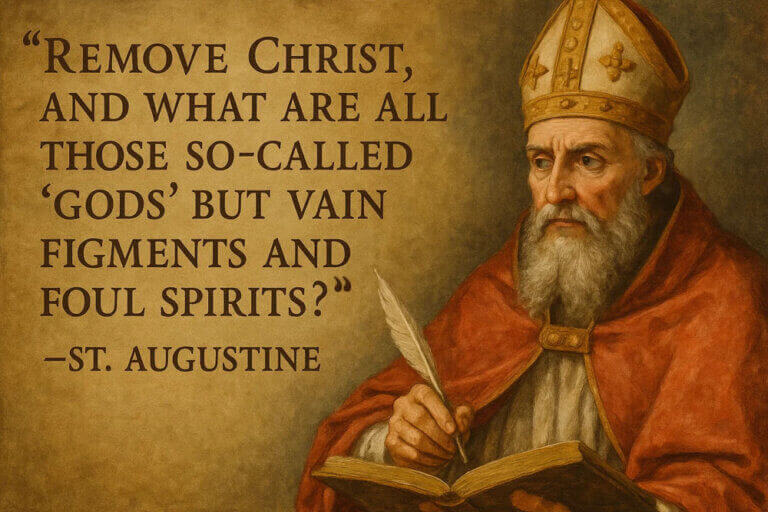

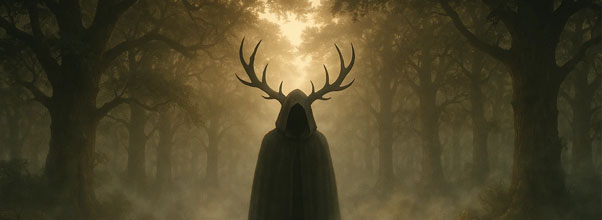



I also loved this show as kid! Around 7-8 years age, I was very afraid of the supernatural Herne
I did not recognize what you see in hindsight; but as a kid, I felt and knew when something was off: The fat Tuck was not funny for me. I took the show very serious, I wondered why he is even around and why people like to laugh with and about him. I very much liked Guy of Gisbourne as villain and hoped that he would turn and fight for the right side, Robin’s.
Now, in hindsight, one can indeed identify what would later emerge to become a massive problem. Like be totally distorted King of England Netflix presented or the, truly unbelievable, originally black Swedes in a Swedish documentary. Nasir was indeed too perfect, in a band of outlaws that had all their own issues, that felt off to me, too.
Very, very few saw it. And they were mocked. I remember that the very Catholic mum of my best friend found Herne totally off, mumbling about paganism. I didn’t understand it at this time.
Paganism, Vikings, Che Guevara – it is all cool nowadays, while literally anything Christian one can imagine is supposedly not. Vikings were not a cool sight back in the days, but today they are cool warriors, while Christians are weak, cruel, mean… all of that.
The implications are staggering. The youth nowadays gets bombarded with massively more than all what was already in Robin of Sherwood! They likely don’t see it either. And parents rarely guide their kids anymore. That is left to totally leftist female teachers.
Thanks for bringing back fond memories, even if they are now disturbing as well!
Thank you for your reflections.
Robin of Sherwood is a show I treasure. It brought a lot of realism and grit into the Robin Hood legend. The writing was terrific, notwithstanding the Protestant anti-Catholic world view of Carpenter.
I consider it the best Robin Hood of all time. The BBC series was atrocious.
I think it stands the test of time.